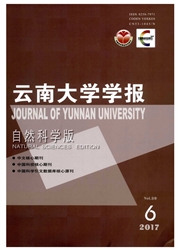

 中文摘要:
中文摘要:
利用1961~1990年平均的降水资料,计算了亚洲季风区内91个测站的相对降水指数.在定义相对降水指数大于147作为雨季开始的标志后发现,亚洲季风区中最早进入雨季的地区位于青藏高原东南侧的纵向岭谷北部地区.该地区在3月份进入雨季,即纵向岭谷北部地区著名的“桃花汛”.在此基础上初步讨论了“桃花汛”形成的原因是由于青藏高原大地形作用下,暖湿西南气流沿纵向岭谷向着低纬高原的爬坡抬升作用。结合来自青藏高原的偏北气流带下的冷平流沿纵向河谷的下楔作用最终导致了该地区雨季的开始.
 英文摘要:
英文摘要:
Based on its definition, the relative raining index of 91 stations in Asian monsoon region was calculated with monthly mean rain data from 1961 to 1990. The mark of rainy season onset was defined as the index exceeding 147. According to this standard, the area whose rainy season began first was located in the north part of longitudinal range-gorge region in southeast of Tibetan Plateau. Rainy season in this area, known as peach blossom flood, started in March. The elementary reason for peach blossom flood was also studied. Affected by the terrain of the plateau, wet southeast flow rose along the longitudinal range-gorge region to- ward the tableland in low latitude and the cold advection came with north flow from Tibet subsidized along the longitudinal gorge region. The combination of these two flows induced the onset of rainy season in this area.
 同期刊论文项目
同期刊论文项目
 同项目期刊论文
同项目期刊论文
 期刊信息
期刊信息
